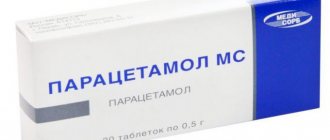It should be noted that cancer cells, due to their high rate of division, are most vulnerable to radiation. In view of this, the method under consideration has become quite widespread and has shown high efficiency. Thus, when it comes to the initial stages of some types of cancer, doctors are often able to cope with them using radiation therapy alone, eliminating the need for surgery. If we talk about the danger to the patient’s body, then the technique, like any other cancer treatment option, cannot boast of a complete absence of side effects. But, modern equipment can significantly reduce the negative impact of radiation therapy. The procedure is as follows: • using a special apparatus, a regular x-ray is taken, on the basis of which the doctor determines the size and exact location of the tumor, and calculates the optimal radiation dose; • marks are made on the patient's body with a special marker, to which the rays will subsequently be directed. These marks must be maintained throughout the entire treatment period. Therefore, you should take a shower very carefully. If a person notices that the marks are starting to fade, they should not make them themselves. You need to see a doctor; • Once the field of action is determined, the doctor adjusts the equipment so that the radiation is directed directly at the tumor. If the contours of the tumor are blurred, the main beam of rays is directed to the area of maximum concentration of cancer cells. Important! To minimize damage to healthy tissue, doctors set three-dimensional coordinates on computer equipment within which the radiation will operate. Such capabilities are available on modern devices, which should be given preference whenever possible. Old equipment is not so safe; moreover, it can cause burns to the patient, from which new models of equipment completely protect a person.
Advances in radiotherapy
Modern installations and techniques of radiotherapy have made it possible to significantly increase the effectiveness and safety of treatment, as well as expand the indications for its implementation, including due to an increase in the number of oncological diseases.
Stereotactic radiosurgery has become a real success in recent years.
She solved the problem of damage to tissue cells and organs through which the beam penetrated to the tumor. Stereotactic radiosurgery is a fundamentally new treatment method. Unlike traditional radiation therapy, the entire dose of radiation falls directly on tumor cells, without affecting healthy ones. Gamma knife is one of the most famous options for such radiation treatment in our country.
Contraindications
There are several reasons why radiological treatment of cancer is not recommended. Radiotherapy affects the patient's condition and can be dangerous for some people. Radiation therapy is not performed for the following indications:
- severe exhaustion of the body;
- signs of intoxication;
- infectious diseases and fever;
- radiation sickness;
- liver, kidney or heart failure;
- severe anemia;
- significant spread of atypical cells;
- bleeding.
Return to contents
Radiation dose
Correct dose calculation is very important. It allows you to achieve maximum effect with minimal harm to healthy cells of the body. This takes into account the type of tumor, its size, and the patient’s health status. Gray (Gy) or its derivative centigray (1 cGy=100 Gy) are used as units of measurement. When using radiation therapy as an auxiliary treatment for breast cancer, head and body tumors, the dose is 45-60 Gy. It is called general and is divided into several procedures that form a course of treatment. On average, the patient has about 5 sessions per week, which are repeated several times over 5-8 weeks. Sometimes these small doses are further divided into two procedures, which are carried out on the same day.
Features of the recovery period
When the course of treatment is completed, the patient receives recommendations regarding further actions. The diet that was described earlier continues to be followed. This will help to quickly normalize the functioning of the gastrointestinal tract and provide the body with the necessary nutrients, without which it will be much more difficult for it to recover. Over the next year you should not be in the open sun. Irradiated skin must be hidden under clothing. At the same time, to soften and nourish, you need to use special creams, making sure that they do not contain dyes and a large number of aromatic additives. It is advisable to visit a psychologist after completing treatment. Many patients believe that now their life will change dramatically, and, not for the better, they limit themselves in everything that once brought joy. But, in fact, everything is not as scary as it may seem, and a psychologist will help you return to your normal life and avoid the development of depressive states. After discharge, the patient will be assigned a time after which he will need to undergo a re-examination. This point should not be neglected. But, you may need to see a doctor earlier in the following cases: • prolonged pain that does not disappear on its own; • persistent loss of appetite, defecation disorder; • increased body temperature; • cough; • formation of defects and swelling on the skin; • the appearance of edema at the irradiation site. In these situations and other cases of concern, you should immediately consult a doctor.
Preparing for radiation therapy
Any treatment is preceded by a conversation with a doctor and additional examinations. Radiation therapy is no exception in this case. The attending physician will tell you about the upcoming procedure, possible results, risks and side effects.
Radiotherapy can be harmful to the fetus. Therefore, pregnancy during this period is undesirable. But if a woman is already expecting a child, the doctor together with the patient will select the most optimal treatment option.
You should definitely inform your doctor about the presence of cochlear implants and pacemakers.
During a course of radiotherapy, the patient may have difficulty coping with work and even ordinary household problems, so it is better to decide in advance about the issue of a house assistant and the amount of professional workload.
When planning a course of therapy, the doctor determines the optimal type of radiation, dose, and direction of the beam. In this case, images of the problem area are obtained and a simulation of treatment is carried out, during which it is necessary to find the most comfortable position of the body during irradiation so that the patient does not have the need to move during the procedure. To do this, the patient is asked to lie on the table and choose the most comfortable of several proposed positions. Restraints and pillows help keep you still throughout the radiation session. Once a comfortable position has been found, the doctor marks the location of the beam's penetration on the patient's body using a marker or applying a tiny tattoo. Next, they move on to the second part of planning - obtaining an image of the tumor, for which the computed tomography method is usually used.
How is radiation treatment performed?
Radiation therapy is a wide arsenal of methods that can be divided into two large groups: external and internal (brachytherapy). In the first case, radiation is generated by a special device that moves near the problem area and sends rays to the tumor at different angles. The patient lies motionless on the table in the position chosen at the planning stage. The exposure time may vary. On average, one session takes 10-30 minutes. In most cases, the patient is prescribed several of these procedures. After some time, the course is repeated. If the purpose of radiotherapy is pain relief, it can be performed once.
The procedure itself is completely painless, but causes anxiety for some people. Irradiation rooms are equipped with audio equipment. With its help, the patient can tell doctors about any problem or just talk to relax. The doctors themselves are in the next room at this time.
Brachytherapy involves irradiating the tumor with radioactive substances, which are injected directly into the tumor or adjacent tissues. It has two varieties: temporary and permanent. In the temporary version, radioactive drugs are placed inside a special catheter, which is injected into the tumor for a while and then removed. Permanent brachytherapy uses a tiny implant that is placed directly into the tumor, where it gradually releases radioactive substances. Over time, they run out, and the grain of the implant remains in the body for life, without causing any inconvenience.
Possible risks of radiation therapy
Unfortunately, radiation has a negative effect not only on tumor cells, but also on healthy cells. Therefore, most patients may develop side effects after treatment. Manifestations and severity depend on the dose of radiation and the area of the body, as well as the ability of healthy cells to recover. Each person's body reacts to treatment very differently. Therefore, it is extremely difficult to accurately predict side effects. Some appear immediately during treatment, others make themselves felt weeks and months later. Fortunately, the most common side effects are fairly mild, manageable, and go away over time.
Long-term side effects are rare, but they can be severe and irreversible. For this reason, the doctor must talk them through.
Side effects
Depending on the time of occurrence, all side effects are divided into two groups: those that appear during or immediately after treatment and long-term ones. The former include skin damage, fatigue, nausea, diarrhea (diarrhea), loss of appetite, hair loss, difficulty swallowing (with chest irradiation), erectile dysfunction in men (with pelvic irradiation), and problems with joints and muscles.
Serious long-term side effects are rare, but one must understand that the possibility of their development exists. For example, in women, radiation to the pelvic area can lead to early menopause and the inability to conceive. In such cases, a woman has the opportunity to freeze several of her eggs before treatment. A man can do this with sperm samples. Other delayed effects include fecal incontinence, lymphedema, thickening of patches of skin, and secondary cancer.
Ways to make your life easier during radiation therapy
Treatment of cancer is a serious burden on the body, which affects overall well-being and mood. This difficult period will be easier if you prepare for it and discuss all aspects of treatment with your doctor. It is advisable that relatives and close people are also ready to help.
It is normal for the sick person to feel exhausted, tired, scared, lonely and abandoned. Relatives can provide great help to patients. Expressed emotions make a person’s life easier, and the patient can express all his feelings. And it would be good for loved ones to remember to tell the patient that he is loved and will be cared for no matter what mood he is in.
If necessary, the patient can contact a psychologist who will choose a way to deal with feelings. This could be meditation, a massage, or even just going to a concert. Some patients find it helpful to communicate with people who have similar problems at specially organized meetings.
Many patients suffer from skin problems. They can be alleviated by following simple tips:
- stop shaving for a while or use an electric razor instead of a regular one;
- opt for fragrance-free soap. This also applies to deodorants, creams and other cosmetics that come into contact with the skin;
- protect your skin from cold winds and use sunscreen with an SPF level of 15 or higher on sunny days;
- choose loose clothing made from natural materials that do not have protruding seams, knots or other elements that can rub the skin.
Diet
It is very important to eat healthy and regularly during radiation therapy, consuming enough calories and protein and avoiding weight loss. After all, the treatment plan and dose calculation are made based on the body weight and volume of the person. If these parameters change, it is necessary to review the entire course of treatment. A person’s diet must include meat, fish, eggs, whole milk, cheese, and legumes.
The attending physician must be aware of problems with appetite. Nausea, apathy, and stomach upsets do not make food desirable. But these unpleasant symptoms can be controlled by frequent split meals or with the help of medications. If you have no appetite at all, you can try replacing solid foods with high-calorie drinks: milkshakes, pureed soups with the addition of protein powders. Alcoholic beverages are not allowed to be consumed in all cases. Therefore, it is better to consult a doctor on this issue.
We must not forget about water; the recommended daily volume is 3 liters.
How to remove radiation from the body after an x-ray
It is not worth cleaning the body from radiation after undergoing one x-ray procedure. X-ray examinations are carried out in a dose that is safe for the body. If it is necessary to repeat x-rays repeatedly, then to get rid of radiation, you should use not drugs, but traditional medicine methods. Medicines should only be taken in serious cases, and the remedies suggested below have minimal side effects.
To remove radiation from the body, it is recommended to drink certain drinks, namely:
- grape juice with pulp;
- milk;
- red wine (no more than 200 g).
Red wine is a product that promotes the removal of radionuclides
Infusion of Deryabin
Among the popular means used to remove radiation from the body after an x-ray is called “Deryabin’s infusion.” To prepare it you need:
- Mix pine, birch, plantain, eucalyptus and nettle buds.
- Take 15 tbsp. l. the resulting dry mixture.
- Pour 3 liters of boiling water
- Leave in a warm place overnight.
Store the finished product in the refrigerator. Drink 60 minutes before meals 3 times a day.
Bolotov serum
To prepare Bolotov's serum, you need to collect chestnut fruits, rinse under running water and cut in half. Next, follow the algorithm of actions:
- Place the fruits in a linen bag and place in a container.
- Pour 3 liters into a container. drinking water.
- Add 1 tsp. sour cream.
Before using Bolotov serum against radiation, you should infuse the product for 2 weeks. Take 14 days 60 minutes before meals in an amount of 200 ml.
Recovery after radiation therapy courses
Experienced stress and health problems negatively affect general and emotional well-being. A rehabilitation program after radiation therapy helps a person cope with psychological problems and unpleasant symptoms, which are individual for everyone. Recovery may include work with a psychologist, physical therapy, massages, physical therapy, and medication.
Fatigue after radiation therapy is an absolutely natural condition. Doctors believe that it is the result of the body’s work on recovery. It's natural to want to take a nap throughout the day, and it can be very beneficial. The cause of fatigue in some cases may be anemia (insufficient number of red blood cells in the blood). Depending on the severity of the condition, such patients may be prescribed a blood transfusion.
When irradiation is given to the pelvic or abdominal area, patients experience nausea and stomach upset for some time after treatment. Fortunately, doctors now have a large number of tools that help control these unpleasant symptoms.
Regular exercise can help relieve joint and muscle problems. There is also a special program for the prevention of lymphedema.
Use of probiotics
There is currently an unmet need for agents that can prevent gastrointestinal toxicity (mucositis, enteritis) associated with chemotherapy and radiation therapy for abdominal and pelvic cancer. Manipulation of the intestinal microflora by probiotic administration influences these gastrointestinal symptoms.
Several clinical trials of different types, patient groups and probiotic preparations have been reported. Adequately dosed Lactobacillus probiotics show potential to reduce gastrointestinal toxicity when used prophylactically. The overall limitations of the study prevent widespread adoption of this practice at this stage, but are informative for rational design of future trials.
The role of microflora in protection against mucositis associated with radiation therapy for cancer has been proven. Clinical studies and preclinical models suggest that lactobacilli contained in probiotics, in adequate dosage, can reduce the symptoms of acute mucositis and alleviate other symptoms of gastrointestinal toxicity.











